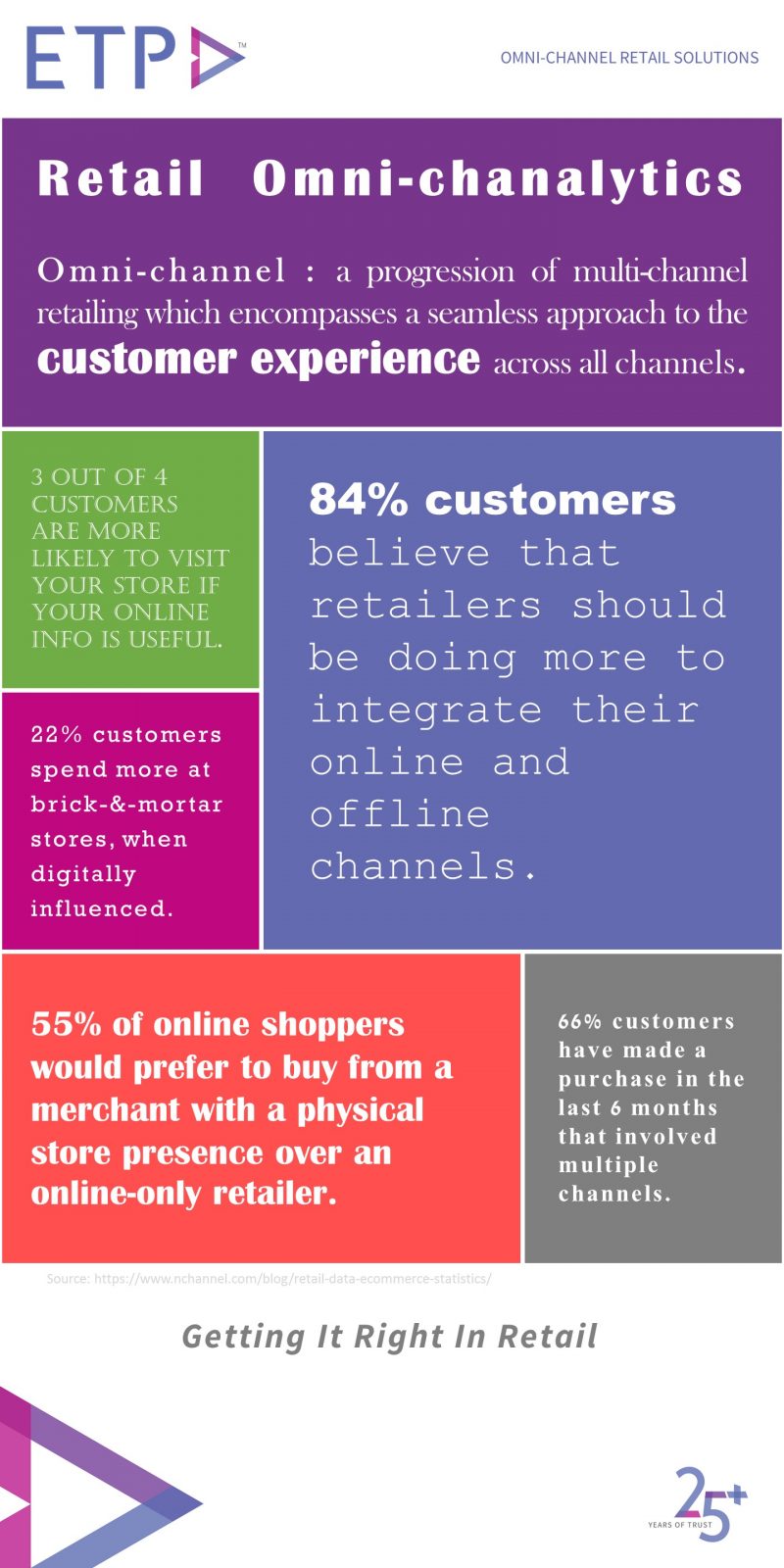
Category: Blog
Understanding Omni-channel Retail – Click & Collect
Why Invest in Omni-channel?
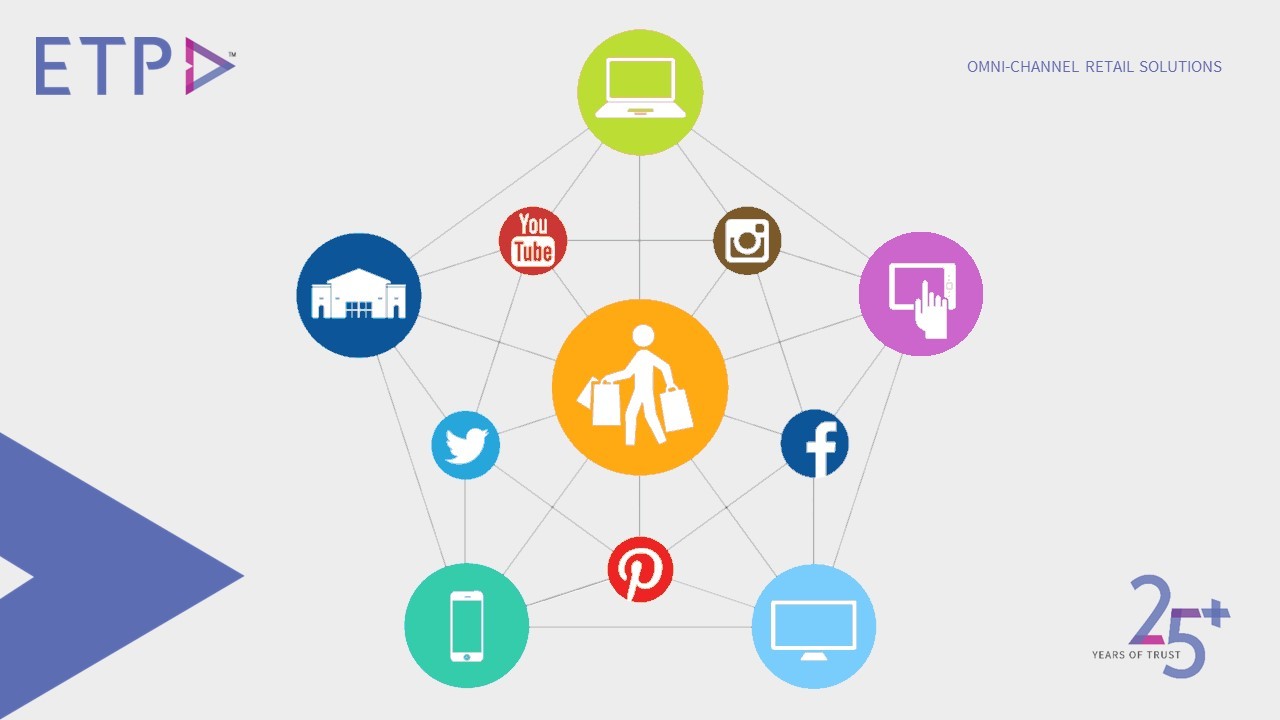
Meeting the complex expectations of the omni-channel shopper demands substantial investment in emerging and effective technologies. Let us look at the factors that are driving omni-channel growth before discussing the return on investment.
The number of smartphone subscriptions globally was 1.6 billion in 2013. According to a report produced by a leading mobile technology enterprise, this figure is expected to increase to 5.6 billion in 2019. 90% of the world’s population will then be able to access mobile Internet connections. This growth in Internet penetration and the immense increase in popularity of smartphones will only magnify omni-channel customer behavior exponentially. These trends point towards omni-channel being the only sustainable way of doing retail business in the future as ‘one-click shopping’ becomes a reality.
Innovation in technology is also driving the retailers’ interest in omni-channel retailing, supporting new capabilities in personalized consumer engagement. Advances in store digitization technologies, predictive logistics, virtual assistance, and customer recognition systems are game-changers. These new technologies have the potential to disrupt existing business models in the same way as e-Commerce disrupted traditional brick-and-mortar sales few years ago.
In future, diverse business models will be driven by the modern day consumer’s preferences. The point in case will be e-commerce giants who are trying to add physical presence to get closer to the customers. Meanwhile, brick-and-mortar retailers are adding online stores and also reinventing the customer experience and the role of their stores (for example, by using stores as fulfillment centers for online orders).
Social media is becoming an increasingly powerful sales and marketing channel. Online companies sit on a goldmine of rich consumer data and they can easily use this to customize offers and target consumers more effectively.
Thus today, technology enables consumers to be present anywhere and everywhere and to meet these consumers in their comfort zone, retailers need to be present wherever they are. For this, they need to invest in modern retail technologies that allows a seamless omni-channel customer experience.
What retailers need to understand about the Omni-channel Customer Experience

Retail has undergone a major transformation in the digital age, and today customers demand better, quicker and seamless experiences. Therefore, brands need to provide omni-channel experiences that allow customers to engage from wherever they are – brick-and-mortar stores, mobile apps, online, kiosks, catalog and more.
However, simply operating multiple retail channels does not constitute an omni-channel strategy, unless done right. Today, customers may start in one channel and switch to another as they progress to a definite buying decision. Omni-channel implies making these complex ‘hand-offs’ between channels must be effortless for the customer.
Omni-channel is not just a mere buzzword. It is essentially a cluster of strategies that need to deliver results. So what do retailers need to know to create a superior omni-channel customer experience?
360° Omni-Channel customer view
Collecting customer information such as shopping preferences, demographics, buying history, preferred modes of payment and so on is absolutely vital for creating a single unified view of the customer no matter which they use to research and purchase. When acquired, consolidated and leveraged fittingly, this analysis can provide a roadmap for retailers to define and deploy more personalised and effective communication and promotions, eliminating much of the guesswork.
Offer consistent and continuous experiences
Today, consumers have instant access to an extensive range of buying options, they will not think twice while letting go of a brand in search of a superior experience. Even if one of the channels is lagging, the retailer will likely see a drop in customer loyalty. Hence, the value of a complete, continuous and consistency is priceless.
Leveraging emerging technologies
The right technology investment is vital to enabling an outstanding omni-channel customer experience. Retailers should equip their business operations with the right mix of emerging and effective technologies to fulfil consumers’ high expectations in this fast and frugal omni-channel age. Brands that can stay on the cutting edge of technology such as mobility, geo-targetting, smart devices for payments, augmented reality and many more are likely to emerge victorious.
While every retailer will bring a distinct omni-channel customer experience strategy to the table, brands will have to strive to provide a seamless, noteworthy customer experience across channels to meet consumer expectations.
Omni-Channel Retail Top 9 Strategic Priorities
WEDNESDAY, 27 JULY 2016
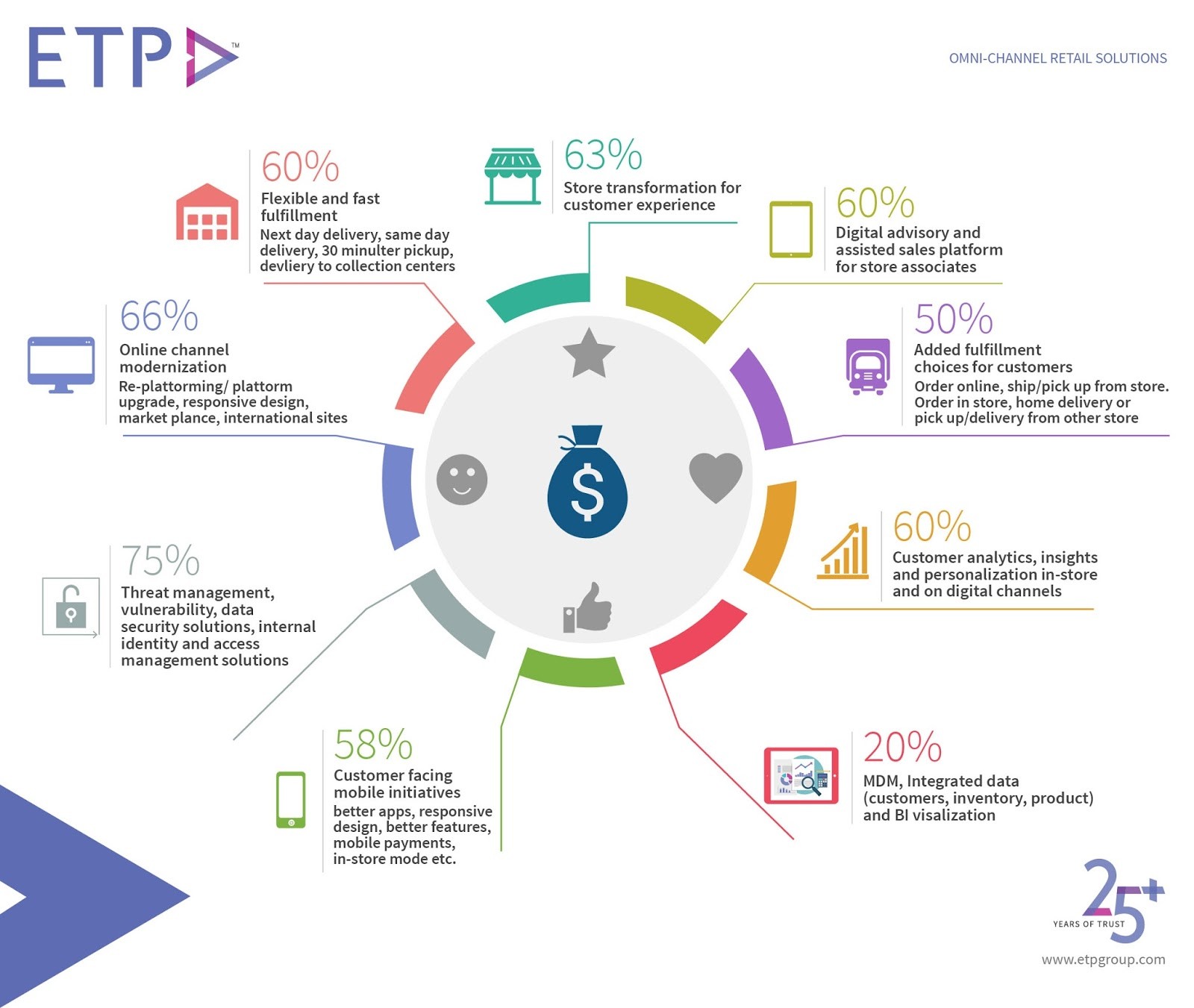
Innovating Retail Business In The Age Of Disruption
TUESDAY, 19 JULY 2016

i) By bringing about a change in the perception of retailing and its customers,
ii) By adding more dimensions to the traditional methods of retailingThis disruption could very well prove to be a destruction of many retail businesses if they are unable to innovate and get it right. Every retailer has to think about getting better in a way that is different from the rest and work towards getting it right in this fast changing retail environment.But what does innovation in retail really look like? Below are a few insightful perceptions;- Bridging the offline-online gap: Customers, frankly, don’t care if the retail business operates its brick-and-mortar stores and an e-commerce portal, separately or not. For them, it is only about getting their order fulfilled. It is up to the retailer to figure out the process to make sure they meet the customer expectations on time, budget and quality, no matter what channel they have used to make the purchase.
Omni-Channel Fulfilment Is The Biggest Retail Challenge
Fulfilling the demands of cross-channel operations is the biggest challenge for retail businesses. According to a recent study that involved 400 retail CEOs across the globe, failing to meet omni-channel demand and being unable to sustain ‘brick and mortar’ sales was the most significant business impediment, cited by 42 per cent of respondents.
The cost of fulfilling orders across channels has increased for 67 per cent of retailer business.
Fulfilling customer returns from orders in-store and online was the biggest challenge, 76 per cent, with 71 per cent of retailers citing it as the most expensive aspect of fulfilling orders.
The research also showed that only 29 per cent retailers consider themselves to be multi-channel, while 26 per cent say having shipping options was very important to meeting customer expectations.
Globally, meeting omni-channel expectations of customers was the biggest priority for the future. It was also the biggest challenge, with 35 per cent citing failing to meet the demands as the biggest concern, and 84 per cent saying they could not currently fulfil omni-channel demand profitably.
The cost of fulfilment, especially returns, was cited as the most expensive aspect of omni-channel operations.
Chief executives surveyed are investing an average of 29 per cent of capital expenditure this year on improving omni-channel fulfilment capabilities.
Globally, CEOs are more upbeat about long-term growth as opposed to growth in the near-term, with most expressing rising confidence in revenue growth over the next 12 months compared to last year.
Helping Retail Associates Sell Better
THURSDAY, 23 JUNE 2016

Knowing The New Age Consumer
THURSDAY, 30 JUNE 2016
The New Consumer is a values-aspirational, practical purchaser. He or she aspire to purchase with a purpose but is unwilling to make practical trade-offs, especially in a tough economy. By and large the New Consumer represents a younger, female, educated demographic.
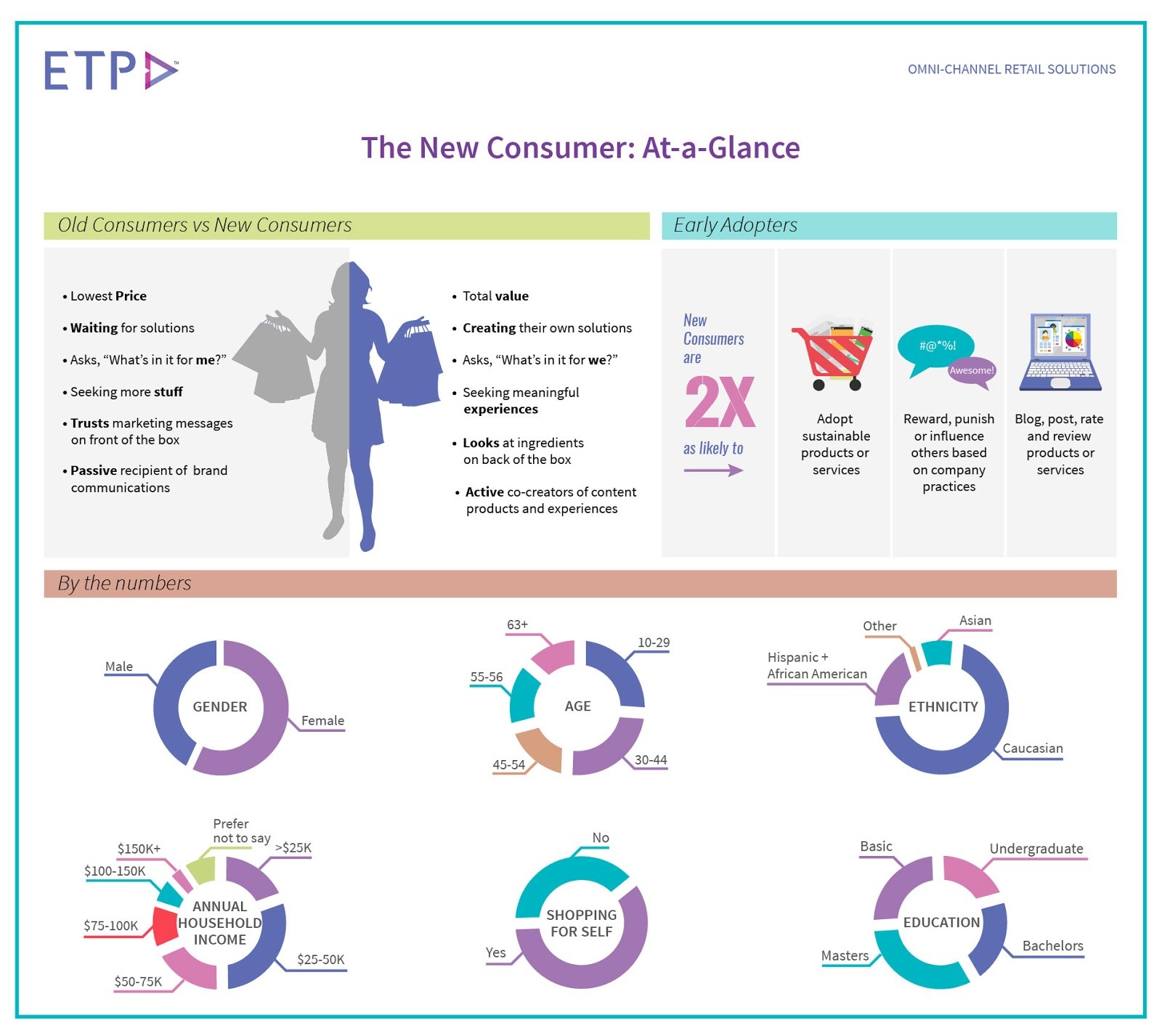
Retail Is Dead. Long Live Retail!
FRIDAY, 17 JUNE 2016
The Retail industry is suffering. Most retailers are struggling to maintain any growth; profitability is compromised, and the future looks gloomy. As I travel across the many countries we work in, I hear the same story. And I also hear the same questions: Is this because of eCommerce? Is this because of the economy? Is this because of geo-political strife?
So let’s break it down. In Asia Pacific, India and The Middle East (we call it the AIM market), eCommerce has between 2 % and 10 % market share. Is this enough to cause the stress in the retail industry? Maybe, and we can do something about it.
Are the economies really doing so badly? Yes, some of the more developed ones like Japan, Singapore, HK, etc. are finding growth difficult. China is slowing down. But some economies like Thailand, Indonesia, India, Philippines, etc. are coming through. Is the geo-political tension between the powers that be, hurting customer sentiment? Maybe. But what can private enterprise do about it?
The key question to ask is which brands are performing and which are not and why? We have many customers and friends in the retail industry who carry scores of brands. And they would do well to examine their brand portfolio. Customer tastes have shifted; all the above factors have driven a changed customer who is willing to spend a lot of money on holidays and mobile phones but will look for value while buying lifestyle items. Value being defined as a great price for a good quality product that is a trend setter. Gone are the days of such products demanding a premium, today that’s the baseline for the customer.
The king is dead, long live the new king, the customer! Sounds obvious? It’s not, with the retailers’ primary focus being location and brand, there has not been much focus on the individual customer. The recognition and acceptance of this will be the change that will drive success and growth in retail and eCommerce. Though I must admit, eCommerce companies have done a better job at personalizing their relationship with customers in a short time.
In the new omni-channel commerce paradigm, the customer is planted firmly in the center of the lens, serviced by any channel that she chooses to interact with, when she chooses, and where she chooses and at the best value. The customer wants hassle free experiences interacting with the brand, recognition, rewards, and superior post sales service.
At ETP, as we work with retailers across 22 countries and over 25,000 stores and 500 brands, here’s what we’ve observed: a tremendous depth in their skills in Merchandising, Brand Management, Sales and Supply Chain Management, their understanding of diverse customers and employees, their ability to manage cycles and seasons and still produce a profit, their infrastructure management, their cash management, among other things.
In the last one year, we are now seeing these giants waking up to the need to focus on the individual customer both in retail and in the eCommerce space. With all their powerful management and execution capability they could be the game changers of this new “Omni-channel” retail world. Like all large organisations with a legacy and systems & processes in place, they may not be as nimble as the pure play eCommerce players, however they seem to have got it now, and are ramping up their organization’s technology, culture and capability to play the eCommerce game. At the same time the eCommerce players have grown and are struggling with the lack of the same competencies that the larger retailers have. You will see many of them opening stores, to better service their customers.
It’s a fascinating new battle front and the next couple of years will tell all. My guess is that the winners will be the ones who leverage the core competencies of retail and deploy the technology savviness of eCommerce companies. Somewhere in the middle, focused on customer service, the successful companies will emerge, after all, isn’t retail a service industry?
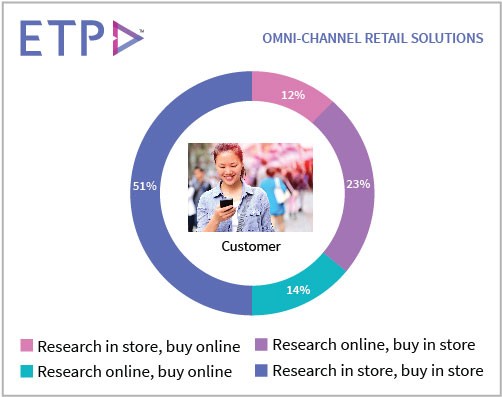
This article has been written by:
 Naresh Ahuja, Chairman and CEO, ETP Group
Naresh Ahuja, Chairman and CEO, ETP Group
Naresh as the Founder, Chairman and CEO of the ETP Group leads the company with a clear focus on bringing enduring value to customers through best practices mirrored in software applications. Spanning 25 years of focus on retail domain expertise and IP development, ETP today, has a strong customer base of market leaders in more than 20 countries across Asia Pacific, India and the Middle East, and is on its way to becoming a global leader in Retail Software Solutions.

